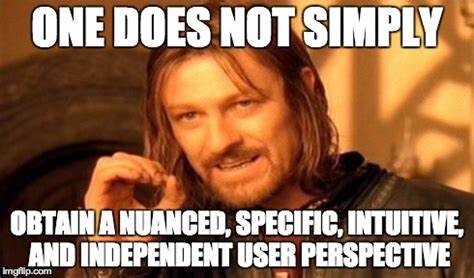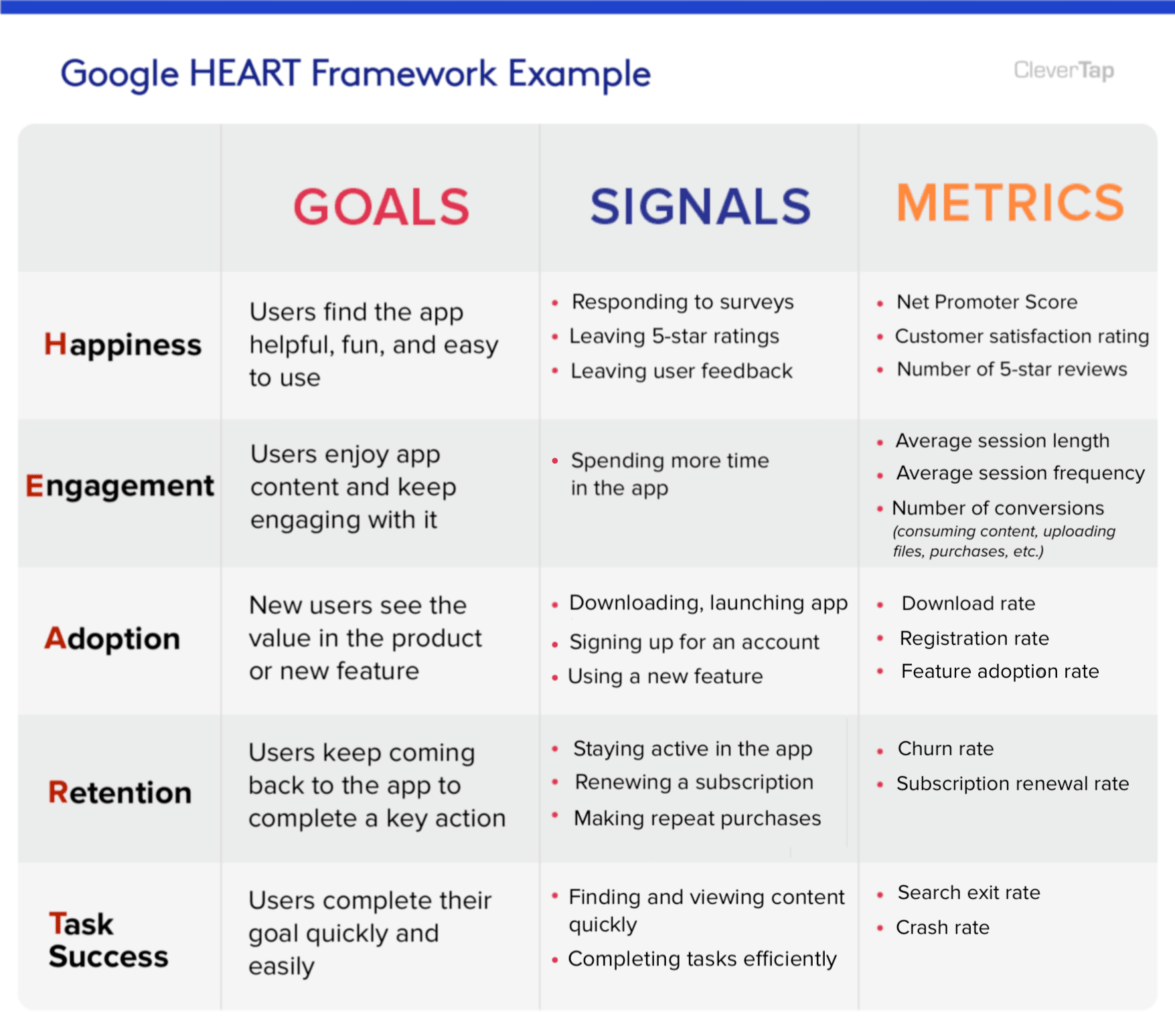Understanding and measuring the user experience can often feel like you’re trying to spot the Northern Lights from the Sahara Desert in broad daylight. No matter how many decades you stand there, squinting up at the sky, you’re no closer to your goal.
If you want to know how to measure UX, you’ll need to start thinking like your users. We’ll introduce you to all the tools and techniques you could ever hope for, and then some.
You won’t need a tape measure when measuring the user experience, but you will need to know everything included in this article. So let’s get down to it, shall we?!
In This Article...
What is User Experience?
We’ll be brief, because chances are that you’re already fully sold on the importance of UX, with a solid grasp of the fundamentals. Are we wrong? Read this article for a more basic introduction on what UX is and how to get started in the world of user research.
User experience (UX) is the overall experience of a person using a product or service. The ultimate aim for product designers and user researchers is to make said product or service useful, intuitive, and pleasing. To do this, researchers and designers need to know how to measure UX.
Let’s just say that there are effective methods of measuring UX, and then there are less effective methods…
@tldv.io We love constructive criticsm #productmanager #product #tech #productmanagement #corporatehumor #startup ♬ original sound – tldv.io – AI Meeting Recorder
“Usability is about setting up a tent, relighting a furnace to heat a home, trying to figure out a tax form, or driving an unfamiliar rental car. Usability impacts everyone, every day. It cuts across cultures, age, gender, and economic class.”
Thomas Tullis, Author of 'Measuring the User Experience' Tweet
A book written by Thomas Tullis and Bill Albert, Measuring the User Experience, is a great read for anybody preparing to delve deeper into measuring UX. If you’re taking the UX path seriously, it’s worth a gander.
What’s the Role of UX Research in Modern Day Product Development?

UX research is the difference between having a nice cup of coffee and going blind. Literally.
The modern day is no different to the olden days. The year is just a number people refer to to keep track of stuff. In reality, fundamentals like UX research do not change.
We still want to understand the needs, behaviors, and emotions of our users in order to improve our products and services. While the general purpose remains the same, the methods for which to attain the information about our users are constantly growing. And some are becoming outdated.
“There’s a big difference between making a simple product & making a product simple.”
Des Traynor, Co-Founder of Intercom Tweet
One of the most important parts of user research that is more important today than ever before is this: your research needs to convince stakeholders and those capable of implementing necessary changes. If your research doesn’t reach or persuade the important decision makers in your business, then it is absolutely useless.
The goal of user research should be to help all stakeholders understand, prioritize and execute what the customer really wants.
There are a few other important things to keep in mind when measuring the user experience in 2024:
- Reduce bias as much as possible.
While some bias is inevitable, you should make a concerted effort to eliminate as much as possible. There are a few key ways to reduce bias. - Capture user feedback as accurately as possible.
Turn to the actual voice of the customer. With tl;dv, you can replay recorded user interviews rich with emotion and precise description of pain points and preferences. These clips become invaluable sources of truth which you can easily integrate into whichever user research repository your team is working with, or easily share ‘a-ha’ moments stakeholders and important decision makers. - Add diversity to your user research. By gathering as much data as possible from all potential walks of life, your data becomes much more rich and varied.
“When UX doesn’t consider ALL users, shouldn’t it be known as 'SOME User Experience' or… SUX?”
Billy Gregory, Co-organizer of #AllyTO Tweet
- Share your insights internally so other teammates can interpret the feedback from the voice of the customer.
- Reach and convince your stakeholders. This step is crucial and can’t be overstated. If your stakeholders aren’t influenced by your work then it’s all been for nothing. In data collection, analyzing and measuring the user experience is great, but accessibility and comprehensiveness matters much more.
There are also a few outdated techniques that can be scrapped in the modern age:
- Surveys. While they can be helpful, generally they are weak user research. You’ll get answers based on a predefined set of questions with no room to elaborate and devoid of all emotion.
- Taking notes. Taking notes by hand is a waste of time. You’ll miss critical insights and never be able to translate the meaning of the user as well as their own voice. Most stakeholders don’t want to sift through dozens of pages of notes, they want to experience the user’s emotion – it’s a surefire way to convince them to act!
tl;dv lets you capture and share open conversations with users in an engaging and accurate manner that are easily shareable with everyone who needs to see it. It’s a well-loved remote UX research tool.
Who Should Measure User Experience?
Measuring user experience is usually left down to user researchers. However, the research gathered should always be accessible and understandable to your stakeholders and wider team. In fact, product managers, designers, and developers should all be aware of how to measure UX and contribute to it. This is a crucial point to keep in mind.
There are several user research tools you can use to conduct your research and analyze your data, as well as dozens of documentation tools you can use to structure your internal docs and perhaps even use as research repositories. But there are more specific UX research repository tools that you can make use of to gather, store, and visualize your data.
Overall, measuring UX is a team effort. Everyone should be involved to a certain extent.
“Supposing is good, but finding out is better.”
Mark Twain, Author Tweet
Who Should Have Access to the Findings?
As mentioned above (and repeated here due to its importance), the most integral thing about user research is that insights reach and convince stakeholders. If they don’t see what the researchers see, all effort is lost. Gathering data is one thing, but making it easy to understand and access is an entirely different ball game, and both are indispensable to the research effort.
User research must bring evidence and recommendations in an easily accessible manner to whom and where decisions are made.
“People ignore design that ignores people.”
Frank Chimero, Co-Founder of Abstract, Designer and Writer Tweet
If your designers, developers, and stakeholders can’t access the word of the people, then they will make a product that people will ignore. Ideally, the entire team should have access to the findings. That’s why an easy-to-use research repository is necessary.
Techniques and Methods to Measure User Experience
If you want to measure the user experience, you’re going to have to get talking to users. Of course, this isn’t the only way to understand what they do with your product or service. In fact, it may not even be the best way, as things like heatmaps can show objective evidence for what users do regardless of what they say they do.
However, user interviews are a critical part of the process nonetheless. Hearing directly from the horse’s mouth what they think about your project can influence strategy to no end. After all, your users are the ones who will actually be using your product or service, so having their opinions on board is vital.
Here are several techniques and methods for measuring the user experience:
- User interviews. As discussed above, user interviews are integral for getting insights directly from the voice of the customer. Make sure you ask the right questions, and use the right software so that you can record, transcribe, edit and timestamp all the important moments, and share them easily among stakeholders and your wider team.
- Come prepared to your user interviews with a plan, and try your best to make the user feel comfortable and open. User interviews are useless if the user feels too awkward to answer truthfully. Make sure they are aware that you are looking to improve your product and let them be free to say what they don’t like about it (as well as what they do).
- Ask open-ended questions and let the user talk. It might sound obvious, but don’t approach with any preconceptions about what they may be thinking or feeling. Let them say what they want to say and store their testimonial without bias by recording the meeting.
- Take notes with tl;dv rather than a pen and paper. Not only can handwritten notes make you miss important insights, but you’ll also risk losing the raw emotion of the user, making your notes stale and inauthentic in comparison.
- Select a diverse range of participants so that you can get a wide variety of opinions.
- Analytics tools. There are dozens of analytics tools that you can use to help you measure UX. Mixpanel or Google Analytics (which is free) are two UX researcher favorites. They are both quantitative tools that measure the user journey, letting you know where they leave off, which features they use a lot, and which ones they don’t use at all.
- Heatmapping. Heatmaps are ideal for tracking the screen of the user, letting you know what they click on and how frequently. You can use this information to deduce what attracts a user’s attention, and what could do with some more love. Hotjar has a great mouse-tracking tool but we’ll get onto that more in the tools selection below.
“Pay attention to what users do, not what they say.”
Jakob Nielsen, Usability Pioneer and co-founder of Nielsen Norman Group Tweet
- Unomoderated tests with questionnaire tools. Tally.so is a great free tool to use for creating questionnaires which can gather useful information from your users. Typeform is another, more advanced, tool for questionnaires and surveys.
- Prototype tests. If you want quality user feedback, you’ll have to get yourself acquainted with prototypes. These are like the real deal, but for testing purposes. Maze.co offers a code-free method of testing users so you can analyze how well they interact with your prototype.
Philosophies and Frameworks

There are a number of philosophies about how to measure UX to get the best results. One of the most well-known frameworks for such a task is the HEART method.
The HEART framework is a set of user-centered metrics that evaluate the quality of the user experience, assisting teams in the task of measuring UX impact. HEART is an acronym for happiness, engagement, adoption, retention, and task success.
Let’s take a look at them in a little more detail.
The HEART Framework
Happiness
Are your users satisfied with your product? Happiness is usually measured by surveys, app ratings, reviews, testimonials, and net promoter score.
Engagement
Are your users frequently returning? Engagement can be measured by number of visits per user per week, session length, or some kind of prominent action like the number of photos uploaded or the number of videos watched per user per day (the specifics of this prominent action will vary depending on your specific product).
Adoption
How many regular users do you have? Adoption is generally measured by how many users have completed the onboarding process, but it can also be measured by the percentage of users utilizing new features.
Retention
How many of your users are returning to your product? Retention is measured by the amount of returning users that come back time and time again.
Task Success
Can users achieve their purpose with your product swiftly and easily? Task success is usually measured by the three E’s: efficiency, effectiveness, and error rate. How long does it take a user to complete the task? How many tasks do they complete? How many mistakes do they make?
“Your most unhappy customers are your greatest source of learning.”
Bill Gates, founder of Microsoft Tweet
Goals, Signals, and Metrics
The HEART framework is a useful structure to follow when working out how to measure UX. It can be applied to a single feature or your entire product.
You can follow the framework with these 3 tips:
1. Set Goals
Do you want to attract new users or increase engagement of the current users? Are you releasing a new feature, or evaluating the entire product’s performance? Which tasks do you want users to complete? Get all of your team members on the same page.
It’s important that you hone in on a small number of goals. 3 is a good maximum to keep in mind. This is because it’s not feasible to try and juggle 5 goals and dozens of metrics simultaneously.
What do you most want your users to talk about and share with their friends? Make that your goal.
2. Define Signals
Which user behaviors and attitudes would signal to you and your team that your goals have been met? If you want to measure user engagement, then an increase in time spent on the app would be a good signal to track.
3. Choose Metrics
Get into the meat of metrics by choosing how you will measure the user experience and the goals you’ve put forth. If you’re measuring user happiness, for example, then 5 star reviews may be a good way to track your success.
It’s easy to come up with more metrics than you need. Keep your list from becoming overwhelming by only choosing metrics that will actually help you in measuring the user experience goals you’ve set for your team.

Source: Clevertap
Software and Tools for Measuring the User Experience
We briefly touched upon some tools during the techniques and methods outlined above. Here, we’ll delve a little deeper into which tools will benefit you in measuring user experience.
tl;dv
First and foremost, you’ll need something for recording, transcribing, editing and timestamping your user interviews. There isn’t a better tool for the job than tl;dv, especially when you consider that tl;dv’s free plan is the best in the business.
As a remote UX research tool, tl;dv is designed to boost collaboration for asynchronous teams and makes it as easy as possible to share findings with stakeholders and other important decision makers. Not only does it allow you to show unbiased evidence from the customer’s own voice, but it lets you leave a hyperlink to the exact moment of importance in any documentation tool you wish.
Even if you’re using a more advanced research repository that is beyond the scope of the stakeholders, you can cut the user interview into the most important highlights and then link to them directly on Slack or your work messenger of choice. This allows you and your fellow researchers to use the platforms you desire, while still being able to get the key information to those who need it, without diluting it along the way.
Surveys are getting outdated: make sure you record and transcribe a user interview to get the best user insights. Same goes for notes – it was already mentioned above, but tl;dv’s notetaker makes taking notes a piece of cake, even in the middle of a meeting.
“To find ideas, find problems. To find problems, talk to people.”
Julie Zhou, former VP of Product Design at Facebook, author of 'The Making of a Manager' Tweet
Other Tools for Measuring the User Experience
There are several user research tools that can be very useful when conducting UX research. Some of them are outlined below:
- Hotjar – a heatmapping tool for visual insights into what your users do on your app
- Maze – an excellent usability testing tool that makes the product design process continuous
- Miro – a fantastic visual platform for collaborating and organizing documentation and research
- Notion – an easy-to-use, customizable workspace for your team
- Confluence – a remote-friendly team workspace from the creators of Trello
- Google Analytics – a free tool that analyzes Google SERPs and lets you track where your traffic is arriving from
- Mixpanel – a wonderful tool for product analytics, allowing you to constantly find new improvements
- Tally.so – a survey builder that enables you to create online forms with pizzazz
Documentation and Insights Sharing
One of the most crucial things about user research is that it’s accessible and understandable to those who make the decisions. If your research is only digested by other researchers then it’s effectively useless.
As already discussed, the sharing of insights is made simple with tl;dv. You can record, transcribe and highlight the interesting moments on Zoom, Google Meet, and MS Teams. This allows you to share insights with your entire team whenever necessary with no hassle whatsoever. Gone are the days where stakeholders needed to sift through a ton of notes or learn a complex platform just to see the researcher’s data.
In addition to using tl;dv, it’s advised to use a common workplace to store and analyze research data so that if the stakeholders want to delve a little deeper, they can. Notion and Confluence are both great tools for this, as the chances are high that your team already uses one of them. Why learn and pay for something new when you can repurpose something you already have and know?
Of course, if your research is more specific then it may require a more dedicated platform. In which case, you can use a specialized research repository for gathering all your data and share the unbiased user insights via tl;dv.
Why the Voice of the Customer is SO Important
To persuade stakeholders to take action, it’s best to provide them with compelling stories that are easy to digest. There isn’t a better way to do this than to use the voice of the customer themselves. Who better to initiate action than the user, right? tl;dv’s clipping functionality can save your ass here.
When you edit Zoom recordings, Google Meets or MS Teams recordings, you can create a short clip of the interview highlights, establishing the needs and wants of the user in their own voice, full of emotion and the natural expressions that come with it. You’d be surprised how much more convincing this is than your wooden notes, recalling what they said.
How Should User Insights Be Incorporated?
It’s important to have a plan when you’re thinking about how to incorporate user insights. Simply gathering them isn’t enough. When measuring the user experience, you’ll need to have clear goals, specific signals, and measurable metrics. Without this, your research will be disjointed and lack the cohesion required to convince stakeholders of any meaningful changes.
Don’t be like Tom…
As previously mentioned, the way to incorporate user insights is by conveying them to the decision makers of your business in a compelling and easy-to-digest way. If they can’t access or understand the research then the insights will never be incorporated. That’s why managing your data analysis is just as important as actually conducting the research in the first place.
“Vision without action is a daydream, but action without vision is a nightmare.”
Kaihan Krippendorff, Business Strategy Speaker and Author of 'Outthink the Competition' Tweet
Start Measuring UX Today
We hope that you’ve got enough tips, tools, and strategies to start measuring the user experience after reading this article.
There are two things to always keep in mind:
- Find out what the user wants and needs
- Convey this information succinctly to the designers, developers and stakeholders.
Measuring the user experience is as simple as that. Sure, there are lots of methods for doing so, lots of planning that needs to take place, and lots of tools you can use to make it happen, but in essence, user research boils down to finding what needs to be fixed, and providing that information to those who can fix it.





